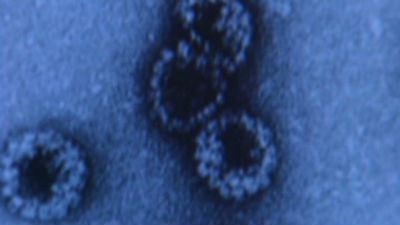The FDA has approved an HPV test that doctors can use, instead of a pap smear. HPV is the main cause of cervical cancer. The HPA test detects the virus in women 25 and older. It’s been used for several years to confirm results from pap tests… but this new approval lets doctors use it without a pap smear.
here’s the release
The U.S. Food and Drug Administration today approved the first FDA-approved HPV DNA test for women 25 and older that can be used alone to help a health care professional assess the need for a woman to undergo additional diagnostic testing for cervical cancer. The test also can provide information about the patient’s risk for developing cervical cancer in the future.
Using a sample of cervical cells, the cobas HPV Test detects DNA from 14 high-risk HPV types. The test specifically identifies HPV 16 and HPV 18, while concurrently detecting 12 other types of high-risk HPVs.
Based on results of the cobas HPV Test, women who test positive for HPV 16 or HPV 18 should have a colposcopy, an exam using a device that illuminates and magnifies the cervix so a physician can directly observe the cervical cells. Women testing positive for one or more of the 12 other high-risk HPV types should have a Pap test to determine the need for a colposcopy. Health care professionals should use the cobas HPV Test results together with other information, such as the patient screening history and risk factors, and current professional guidelines.
“Today’s approval offers women and physicians a new option for cervical cancer screening,” said Alberto Gutierrez, Ph.D., director of the Office of In Vitro Diagnostics and Radiological Health at the FDA’s Center for Devices and Radiological Health. “Roche Diagnostics conducted a well-designed study that provided the FDA with a reasonable assurance of the safety and effectiveness when used as a primary screening tool for cervical cancer.”
The FDA first approved the test, called the cobas HPV Test in 2011 for use in conjunction with or as a follow-up to a Pap test (cell cytology), which examines cervical cells for changes that might become cervical cancer.
Today’s approval expands the use of the test to include use as either a co-test or as a primary cervical cancer screening test, however; it does not change current medical practice guidelines for cervical cancer screening. These guidelines are developed, reviewed and modified by groups other than the FDA.
Genital HPVs are a group of more than 40 related viruses and, according to the Centers for Disease Control and Prevention (CDC), are the most common sexually transmitted infections. Approximately 14 “high-risk” HPV types are associated with cervical cancer.
In most cases, a high-risk HPV infection goes away on its own and does not cause any health problems. However, about 10 percent of women infected with high-risk HPV develop a persistent infection which may put them at risk of cancer. Virtually all cervical cancers are caused by HPV infections, with just two types, HPV 16 and HPV 18, responsible for approximately 70 percent of cervical cancers.
Data supporting the use of the cobas HPV Test as a primary screening test for cervical cancer included a study of more than 40,000 women 25 years and older undergoing routine cervical exams. Women who had a positive Pap test or whose cervical cells screened positive for HPV, as well as a subset of women whose Pap and HPV tests were both negative, underwent a colposcopy and cervical tissue biopsy. All biopsy results were compared to the Pap and cobas HPV Test results. Data from this study, which included three years of follow-up on women who went to colposcopy, showed that the cobas HPV Test is safe and effective for the new indication for use.
Canadajournal/Press Releases
 Canada Journal – News of the World Articles and videos to bring you the biggest Canadian news stories from across the country every day
Canada Journal – News of the World Articles and videos to bring you the biggest Canadian news stories from across the country every day



